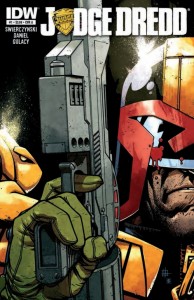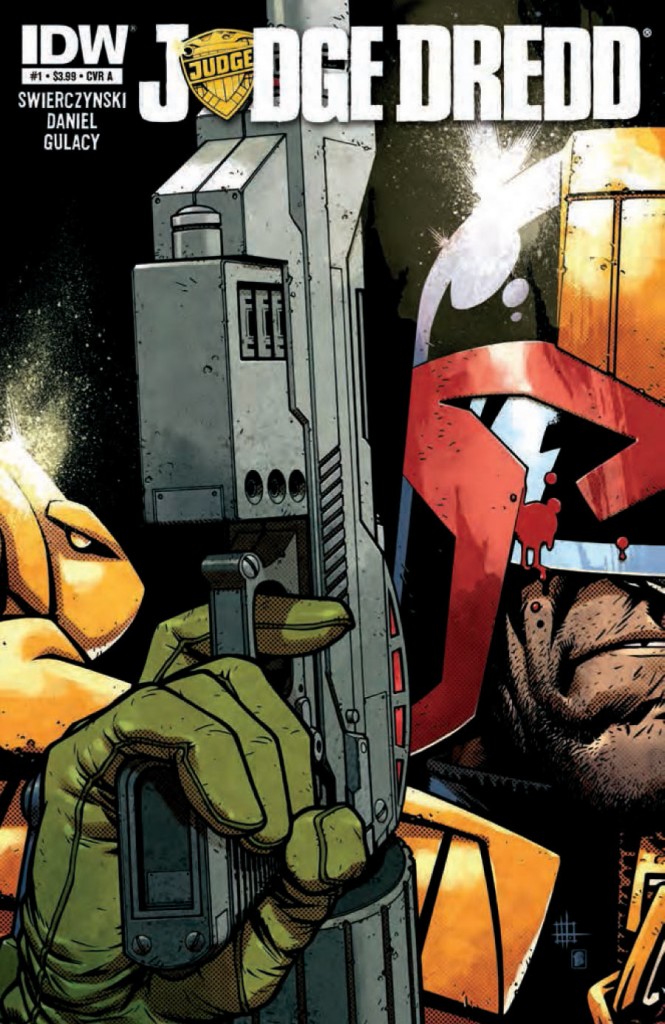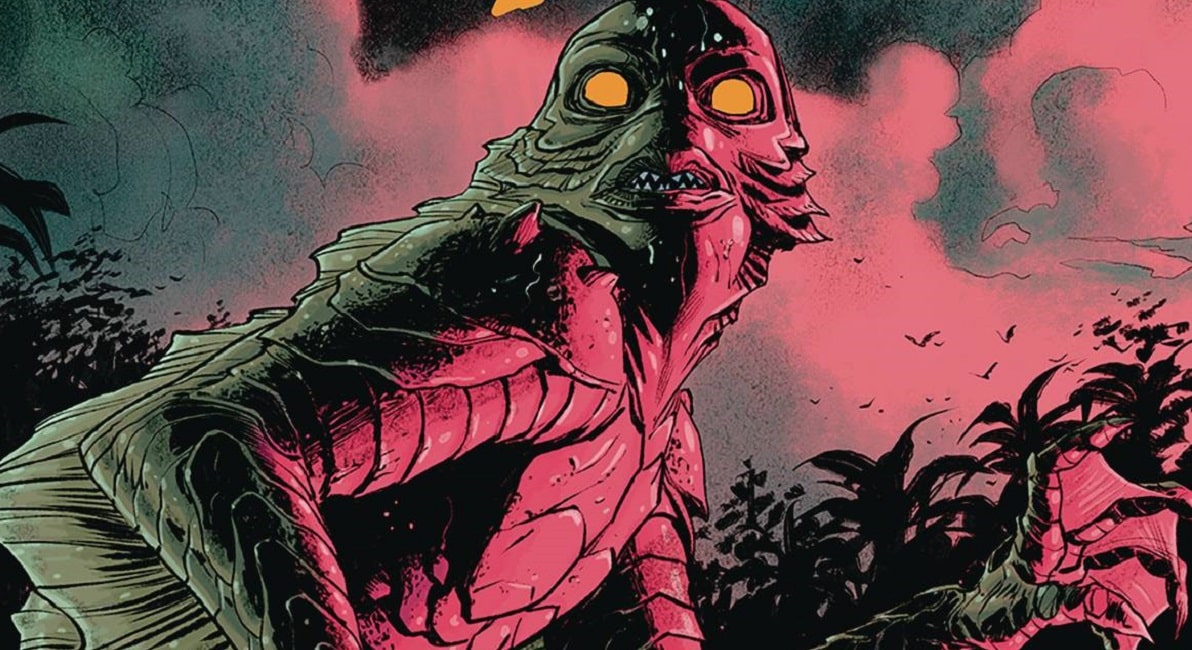
I’d probably fall into the category of a casual reader of the Dredd. I’ve pulled a variety of editions out of sales piles over the years (much of it the late 80s/early 90s reprint materials) and I’m in the middle of the “Cursed Earth” section of the Case Files reprints (think Essential/Showcase), which is to say I’m about 1.3 volumes into that. I’ve read a reasonable amount of the early material, but I’m not current and I haven’t purchased 2000AD or the Megazine on a regular basis. A character with the history of Judge Dredd, you should know where I’m coming from in terms of previous exposure.
The IDW flavor of Dredd has an unusual format. There’s a 16 page lead story, that would be the one Nelson Daniel is drawing, and then there’s a 6 page story following it. (Yes, that means there are 22 pages of comics, not 20.) In a certain sense, that backup strip is closer to the traditional Dredd experience. Flipping through the Case Files, has the Judge Dredd installments alternating between 5 and 6 pages. Then again, the backup strip only features Dredd in the first issue, and then only slightly.
The backup strip is something of a world building strip. It rotates artists (Paul Gulacy, Brendan McCarthy and Langdon Foss, so far). The first issue has a vignette about the malfunctioning/rebelling robots from the main story in that issue. The second issue has a Psi-Judge Anderson adventure, that being a fixture of the original series who’s introduced in issue 2. Spoilers prevent me from revealing what the backup in issue 3 is, but suffice it to say it sheds a little light on a plot element in the main feature.
The main feature is, as you might expect, a little different flavor from the original. Its style may be defined by the narration boxes that pop up with some frequency. It’s a bit like Dragnet, really. A deadpan delivery, updating and commentary that can be expository, macho or subversive, depending on the box in question and how you to choose to read it. When it’s funny, it’s dry. But it struck me as more New York dry than UK dry.
The main feature varies in subtext a bit, but then Dredd always has. Your main character is a lawman, and in this future, the lawmen are “Judges” who pronounce sentence when they arrest you. It’s a draconian code and Judge Dredd may be the strictest Judge of them all. Which is to say, he doesn’t hesitate to start shooting and he takes his work seriously. The overall arc involves a mystery/conspiracy of robots malfunctioning and working to their own ends, which echoes an early 2000 AD arc, except for the slapstick overabundance of overripe fruit. It goes more serious in the second issue for the introduction of the Psi-Judges and then dips into more satirical realms with a gang who, instead of kidnapping a wealthy spouse, clone the spouse and ransom the clone. The narrative style is the same dry monologue the whole time, but the tone of the story shifts with the material. The backups tend to be a little heavier on the irony.
The comic is still establishing the world of Mega-Cities. The early focus is on contrasting between the haves and the have-nots. The sociological satire of the ultraconservative/ultraviolent stereotype of America taken to the extreme that marks the UK version is still there, but it’s not the main focus and there’s more of a consumerism run amok aspect. It’s more of a background element that gets played up when the story gets more subversive.
If you’re a mystery fan, Swierczynski has a ton of Easter eggs for you. From that 50s cop show narrative overlay to a noir crime novel pun you won’t believe you didn’t see coming in issue 2.
This is a comic that I like more as I read more issues. Part of it is getting used to the format. Part of it is the world building. Part of it is seeing the setup of the first issue inching forward in the background.
Will a longtime Dredd fan like this? I’m not entirely sure. Dredd is still a law and order hard-case, though perhaps a hair more contemplative than the early strips I’ve read. The Mega-Cities felt right based on my more limited familiarity with the source material. The flavor and approach is a little different, though.
If you’re a big Dredd fan, it’s probably worth a look to see if you like it. I’d say issue #2 or #3 would be a better jump-in if you’re already familiar with the character.
If you’re not familiar with Dredd, this is probably described as one part dystopian science fiction, one part Dirty Harry if Dirty Harry had the authority to pronounce a death sentence during the shootout, one part social satire. The percentages of those parts will vary from story to story. If you wanted to call this a more deliberately written version of “Demolition Man,” that film definitely travels in similar circles. I find myself drawing a blank when looking for a recent American comic to compare it to. Dredd may be a sub-genre unto itself and the IDW edition just being an entry in that sub-genre.





While it’s a well done book I felt a little underwhelmed by the first two issues. I could give the book it’s fair due and try the third issue but I don’t hold much hope on becoming a regular reader.
Comments are closed.